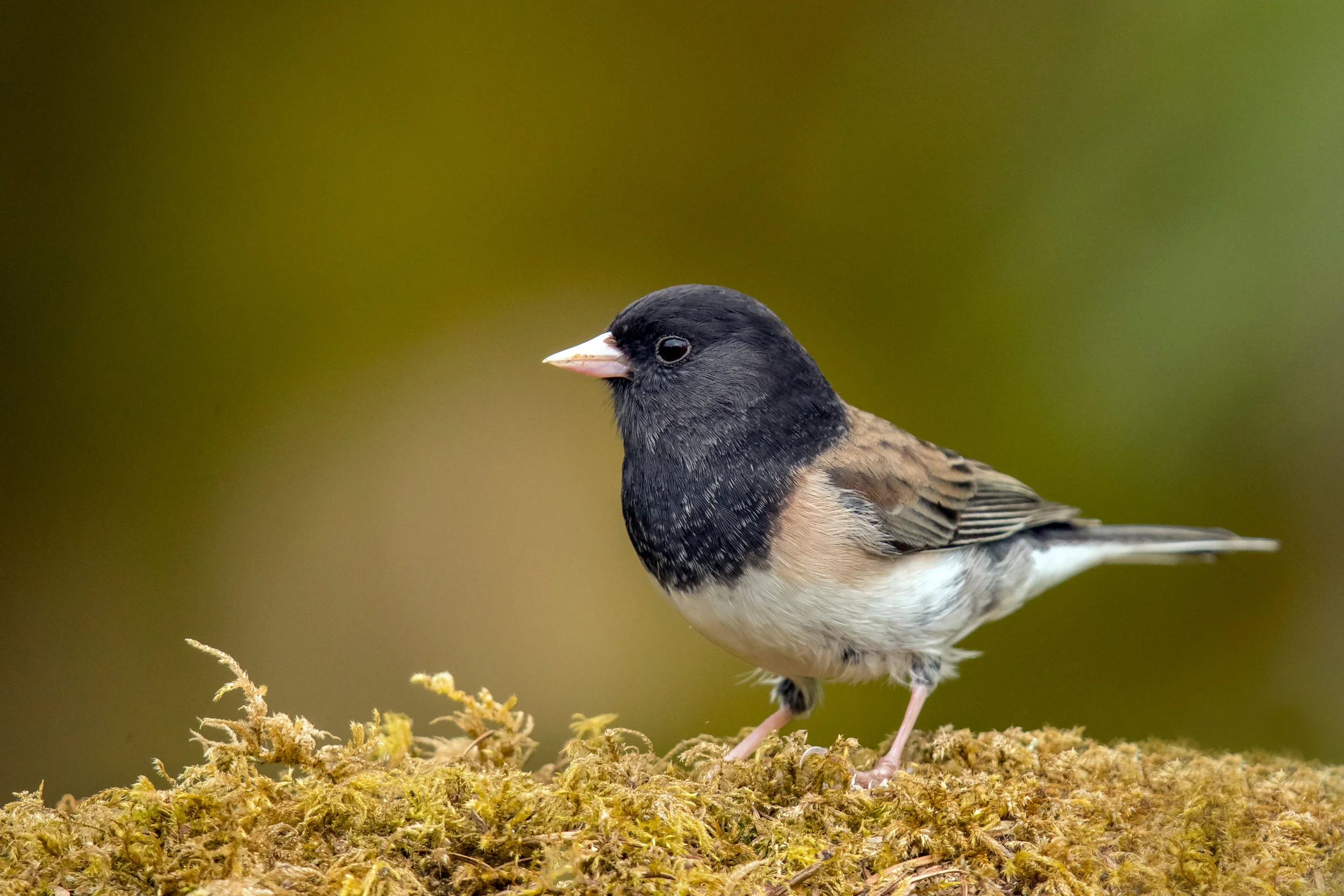Bird of the Month: Dark-eyed Junco
By Hugh Jennings
PC: Mick Thompson (Dark-eyed Junco)
Scientific Name: Junco Hyemali
Length 6 in
AOU Band code DEJU
Juncos are common and abundant, sparrow sized, 6” long with light pink to white bills, gray or black hoods sharply set off from white belly, and white outer tail feathers that are conspicuous in flight. The four letter code is DEJU. Often seen in large flocks, they hop on the ground and pick up small seeds, but seldom scratch with their feet. Readily comes to feeders on ground or trays. Nest is cuplike made of grasses, moss, pine needles and is built in a depression in ground near tall vegetation. In summer it breeds in coniferous or mixed woodlands. It spends the winter in suburbs, farmyards, and fields. In the Puget Sound area it is generally abundant in residential areas only in fall and winter and then leaves in early spring for higher elevation forests. However, if bird feeders are used throughout the spring and summer, some juncos will stay all year round. Until recently they junco was divided into four full species plus several subspecies in North America. They tend to hybridize or integrade and are now lumped into one highly complex species. The western “Oregon” race most common in our area has a black (male) or gray (female) hood and brown back. The western “Pink-sided” race has a gray head and pinkish sides. The Eastern “Slate-colored” race is uniform dark gray (male) or brownish gray (female). The “Gray-headed” race found in the southern Rockies and Southwest is light gray with a reddish-brown back. The “White-winged” race which breeds in the Black Hills area has extensive white on the tail and usually white wing bars.


